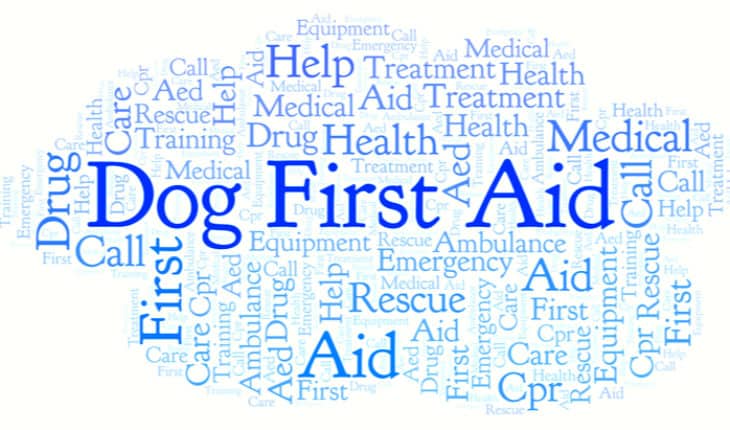CPR for dogs – how to save your pet’s life: Finding your dog unconscious or not breathing is every pet owner’s worst-case scenario. So why not take a few minutes to learn emergency first aid for your pet and equip yourself with skills to help them.
The sense of panic combined with not feeling sure how to best help your beloved pet can make many of us freeze. Furthermore, some people worry that what they do will actually make the situation worse. So, if your dog suddenly collapses in the middle of the park – would you know how to give your pet the best chance of survival?
Reading this article calmly ahead of any emergency situation, can help prepare you to meet any stressful emergency situations in the future. Crucially, it could save your dogs life.
Firstly, it is important to remember that dogs aren’t like us. Therefore, it isn’t as simple as using human CPR techniques on your pet. So, read on to learn everything you need to know about CPR for dogs.
How do you know if a dog needs CPR?
As always, human safety comes first. Ensure you approach with caution. Even an unresponsive pet can bite by instinct.
Firstly, you’ll need to check for:
- Response– does your dog respond in any way when you call their name or touch them? If not, this means they are unresponsive.
- Breathing– is their breathing normal? If they are not breathing, this means they need help.
- Absence of a pulse or heartbeat– the easiest way to find this is by feeling their femoral artery in the upper inside thigh. Alternatively, it may be possible to feel their heart beating by putting your ear to their chest. No heartbeat means you need to act fast.
Second set of checks
Sometimes, it can be surprisingly difficult to evaluate these three signs. If this is the case, the simplest way to check on your dog is to do three other rapid checks. This quick assessment is very quick and should take no more than 15 seconds to complete.
Just remember ABC
- Airway– carefully ease the dog’s head back to open their airway. Remove anything obvious blocking the airway.
- Breathing– check to see if they are breathing.
- Circulation– check if they have a pulse.
CPR for dogs
If the dog’s airway is clear, they aren’t breathing.
Additionally, if the colour of their gums isn’t a healthy pink but has a blueish tinge instead, this indicates the circulation is not functioning normally and immediate CPR is needed, to give them a chance of survival.
Firstly, turn the dog onto its right hand side.
If they have a pulse, you should start with up to 5 breaths into their nostrils.
In many cases this is all that is needed to re-oxygenate the pet and bring them back to life.
If there is no pulse then start with 30 hard and fast chest compressions.
When to start giving CPR for dogs?
You are giving CPR to a dog if they are unconscious and not breathing.
How to give chest compressions to a dog?
Push hard and fast for 30 compressions.
Follow by a couple of breaths.
Where to give chest compressions on a dog?
See the infographic above to see where you should be applying chest compressions for different-shaped dogs.
Chest compressions should normally be done with the animal lying on their side. For flat-chested dogs such as a bulldog or pug, it might be better for them to be on their back. However, you may need a second person to help.
Aim to compress the chest to 1/3–1/2 of its width, at a rate of 100–120 compressions per minute.
It’s important to pull back after each press to let the chest rebound fully, rather than keeping the chest in the compressed position.
Continue the compressions and rescue breaths until you can hear the heartbeat and feel or hear regular breathing. When your pet recovers and is breathing once again, do seek your vet’s advice.
Want a free dog CPR course?
To learn more – and to give yourself the extra confidence you may feel you need – please click here for our free dog CPR course
- What is a seizure? - 13th March 2025
- Febrile Convulsions and Seizures in Children - 13th March 2025
- Why women are less likely to receive CPR or survive cardiac arrest - 6th March 2025










